Anaïs Ca Dao van Manen was born in Paris, has Vietnamese and Dutch blood, returned to Vietnam at the age of 3, went to Singapore at the age of 19, then returned to France, to England, to Colombia, back to England, and then lived in Belgium... The rather "roundabout" journey of the 32-year-old international citizen can be summarized like that. With her broken Vietnamese, she has to pronounce each word in everyday conversations to try to sound as Vietnamese as possible. However, just touching on the topic of Vietnamese cuisine , Ca Dao seems to transform into a different person. She can "shoot nonstop" about dishes that even many Vietnamese people are not familiar with, from goat blood pudding, thang co, smoked Tay sausage, to highland spices such as doi seeds, mac khen, or she can tell in detail, "drooling" about a wedding feast of the Nung people... All the culinary stories told by Ca Dao, feel like those delicious dishes are filled with passion, joy, and excitement.

Speaking of her profession, Ca Dao is a chef, but unusually, she is a mobile chef, with a long history of "fighting" through many countries in various roles, from staff, to assistant chef, head chef, then culinary consultant, creating menus for restaurants in London (UK) and causing such a big buzz that the British culinary magazine Luncheon Magazine in its 2021 publication recognized Ca Dao as an outstanding young talent.
The Great British Chefs website also wrote a long article praising Ca Dao’s work in London when she set up the Bao Borough restaurant. Many newspapers and websites came to interview and introduce the story of developing Ca Dao’s cuisine in the style of modernizing flavors and adjusting to make the delicious dishes easily suitable for everyone.
Meeting Ca Dao holding a piece of pork fat from Trieu Khuc village, a glass of Hanoi draft beer in a small restaurant on Nguyen Viet Xuan, Ha Dong, talking endlessly about the attractiveness of the famous pork fat with her colleague from England, who is also a chef but cannot eat pork for religious reasons. Seeing the English chef's eyes widen when hearing her describe the richness of the fat, the crispiness of the thin layer of lean meat deliberately stuck in the base of fat by the cook, when fried, Trieu Khuc pork fat and draft beer just go together to the point of "exhaustion". The foreplay with draft beer and specialty pork fat opens the story of Ca Dao's emotional cuisine.
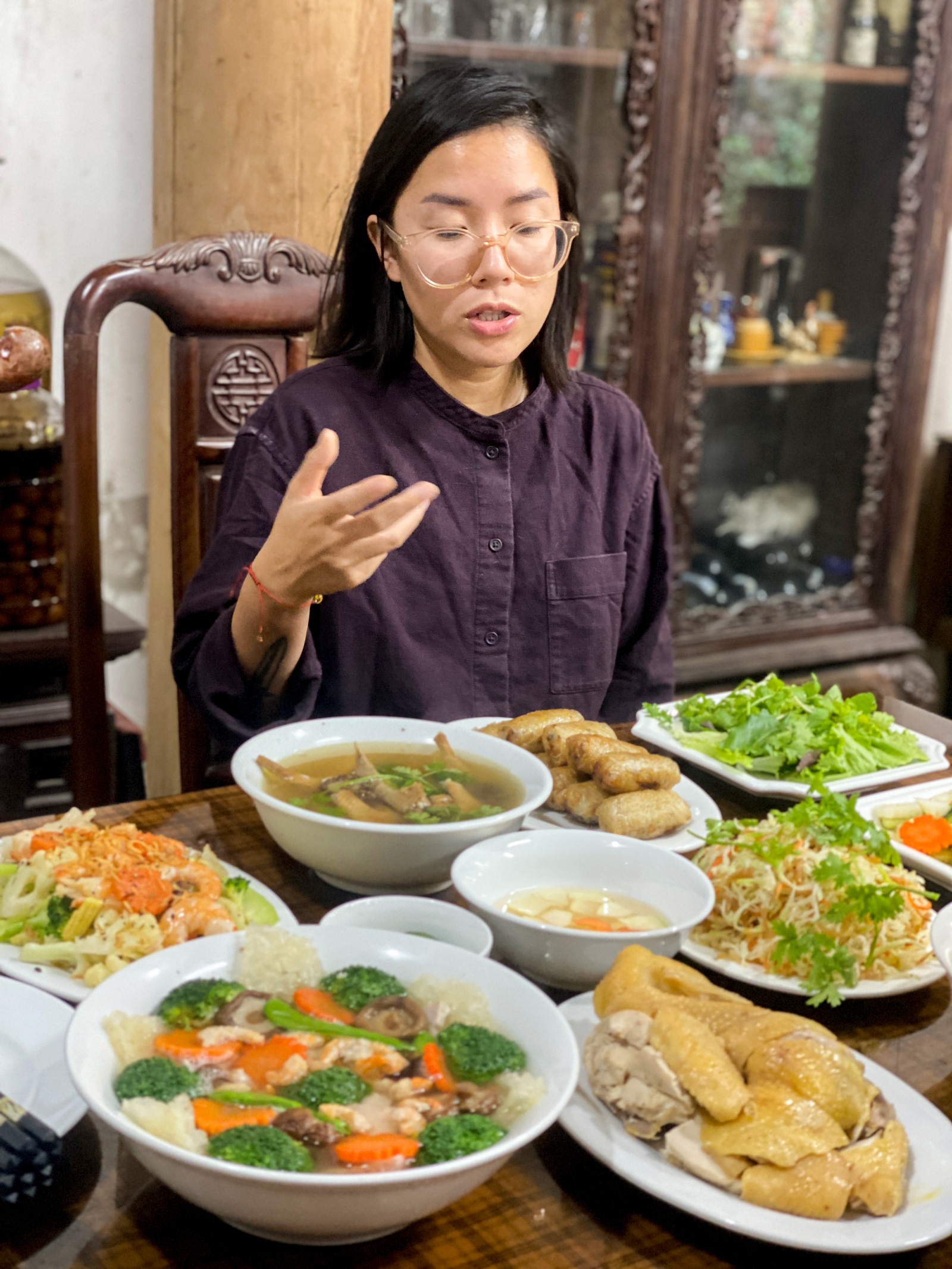
Folk songs on traditional trays of food by artisan Nguyen Thi Lam, Bat Trang
Talking about her love of food, she said: "My father used to be a big foodie. When he was studying in Saigon, he often took the whole family to restaurants. Every day like that was a lot of fun, because the whole family gathered together, talked about the restaurant's dishes, and commented on how good or bad they were. When my father passed away, my family still kept that habit, because every meal was a time for the whole family to tell each other stories, to talk to all family members, and that cozy atmosphere and feeling, no matter where I go, I will never forget it."
I thought that Ca Dao's childhood had many opportunities to learn and cook delicious Vietnamese dishes, but: "My parents had to work a lot, and when my father passed away, my mother had to work even harder, so no one cooked at home. At home, Ms. Hieu (the maid - NV) and my grandmother took care of that. But when I went to study abroad in Singapore, I suddenly craved Vietnamese food terribly. There are many delicious restaurants there, but they come with prices that poor students cannot afford. When I craved it so much, I had to cook it myself, cook whatever I craved, cook from my memories when eating, cook by... calling Ms. Hieu for instructions."
Thanks to her craving for Vietnamese delicacies and her childhood experiences, Ca Dao has a talent for processing available ingredients according to her own feelings to create dishes that are familiar in the way they are made, but are varied in the ingredients and decoration, so that the dish is developed to a new level, not only delicious but also beautiful, refined, and most importantly, easy to cook.

After leaving Singapore, Ca Dao went to Paris (France) to study at the culinary school L'École de Paris des Métiers de la Table. She said that at that time, she craved Vietnamese food even more, but what soothed her cravings and homesickness was going to Vietnamese markets, meeting Vietnamese people, chatting with the vendors to find a sense of familiarity and family.
Every time she cooks, Ca Dao is always very meticulous when choosing ingredients, with the reason: "Thanks to the formal training in culinary arts, I string together and connect knowledge from lessons and exercises at school, along with memories of Vietnamese dishes. If I have any questions, I call Saigon to ask Ms. Hieu, and thus create dishes with multi-dimensional combinations. For example, when making beef stir-fry, I add butter (French cooking method) to the spices to make the meat more fragrant and fatty. Then for beef stew, for example, in Vietnam, this dish is cooked on the stove, but when I make it, I use the baking technique, after 1-2 hours the meat is soft and very easy to eat."
After graduating from a French school, she tried her hand at many different restaurants, and her choice was also intentional: "I had to see that the restaurant was aiming for the chef's creativity before I applied to work with them. I carried out this idea when I cooperated with friends to open a restaurant, or advised investors, and created a menu for them. I have a knack for creating a restaurant menu that is not traditional, but uses available ingredients in the region to create new dishes."
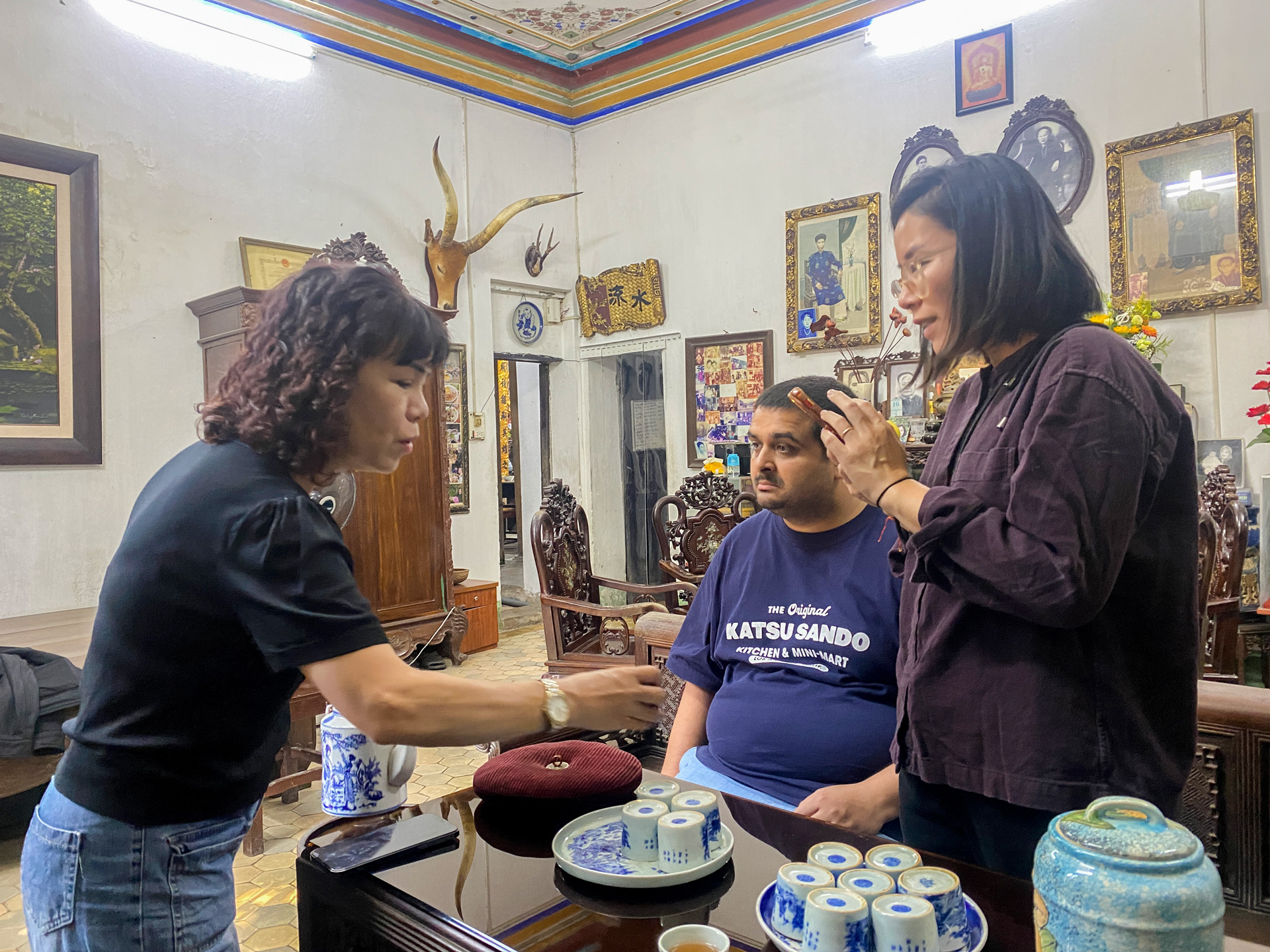
Ca Dao explores the tea bud drink, a habit of middle-class families in ancient Hanoi.

Ca Dao's work flourished in England, then in Colombia, becoming a phenomenon among young chefs. Everything was on the rise, then bad news struck when she discovered she had leukemia. Ca Dao had to leave her unfinished job and return to Belgium for treatment. And from here, a colleague who knew of Ca Dao's ability introduced her to Phaidon Publishing House (based in New York, USA and London, UK) and the publisher commissioned her to write a book about Vietnamese cuisine.
Shaking the pan with Ca Dao is easy, but writing is certainly not easy for an overseas Vietnamese who has not used Vietnamese for a long time, and whose sentences are not yet clear. However, she still confidently accepted the task, because: "I can speak broken Vietnamese, which is much better than the younger generations that I know, they can only speak English, and overseas Vietnamese in France speak French, but do not know how to speak their mother tongue. I have never written a book before, but I am confident in Vietnamese culture, in my experience with Vietnam. The topic of the book is to find 400 recipes for Vietnamese dishes for them. It is a big challenge, but when I heard the topic, I felt proud, because if completed, the book will help overseas Vietnamese who cannot speak Vietnamese have the opportunity to understand more about their roots, about Vietnam through specific dishes. I want future generations of overseas Vietnamese children to be able to easily find the history of their nation, through culinary culture".
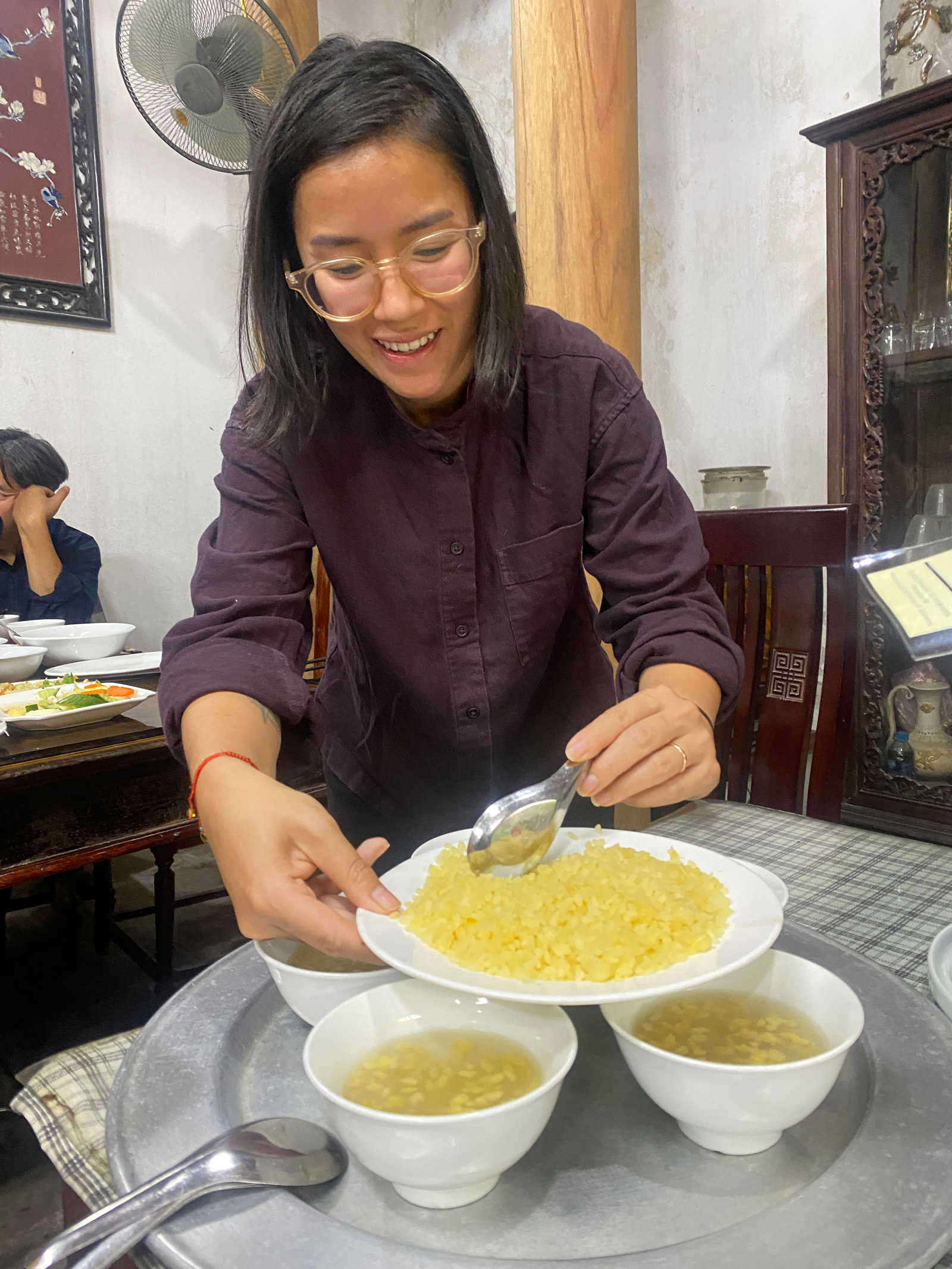

The petite girl, sitting in a cafe, can yawn when the topic is not "right", but when talking about Vietnamese cuisine, she can talk endlessly. The way Ca Dao enjoys food is the same, whether in a luxurious place or a sidewalk noodle shop, every time she picks up her chopsticks, she must concentrate 200% to contemplate, experience, and enjoy each bite.
The project has just begun and Ca Dao will spend 2024 hunting for dishes from the South to the North. "The publisher only asked to write about Vietnamese cuisine, but Vietnam has 54 ethnic groups, most of the culinary flavors of each ethnic group have different details, which creates their own identity. So I chose to include the dishes of ethnic minorities in the book. That is also good for readers who are Vietnamese people living abroad for a long time and have not had the opportunity to return to Vietnam. When reading the book, they will understand how rich Vietnam's cuisine is," she revealed.
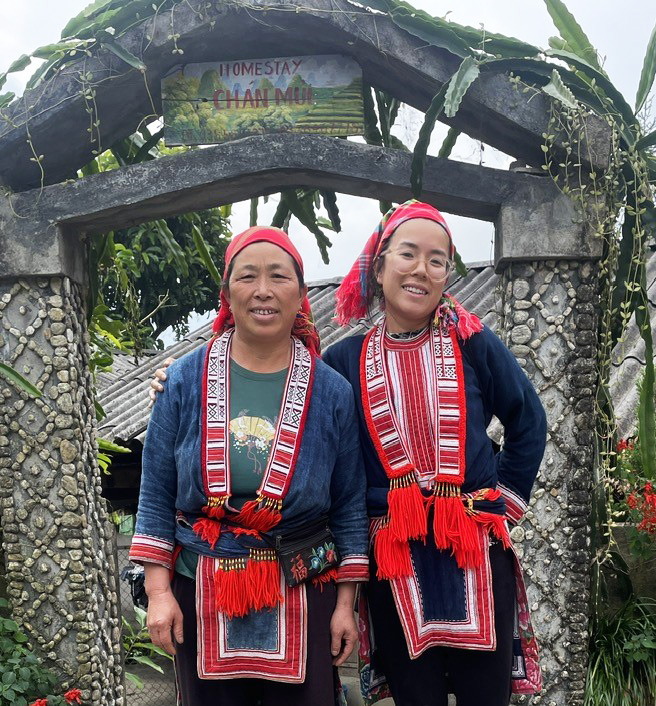
Ca Dao (right) in Red Dao costume in Hoang Su Phi, Ha Giang
Each dish is associated with a regional location, culture, history, characters... and Ca Dao's way of doing it is to go to the place, interview, choose ingredients, and summarize cooking methods. The story does not stop there, after collecting information about the dish, Ca Dao also verifies her notes by looking up more documents. The young female chef shared: "I really like the cultural stories behind the dishes, so I often go to the University of Social Sciences and Humanities, Ho Chi Minh City to find documents. I received support from many people when they knew about the project I was doing, they lent me culinary books that they had collected for a long time so I could copy them to read and research. I was very afraid of writing wrongly, writing one-sided information".
Regarding the book's layout, Ca Dao said she will distribute it in a balanced way, with up to 80% of the dishes being easy to make and perform, while the remaining 20% are difficult to prepare because the ingredients are not readily available or the cooking method is too complicated to imitate. Taking the example of Ha Giang's Au Tau porridge, she said: "That porridge is really delicious, but I will only write the story, not create a recipe because Au Tau tubers are poisonous, and improper preparation will harm the user."
Currently, Ca Dao's journey to find Vietnamese dishes has gone more than halfway, she boasts: "The process of studying and working in foreign restaurants has helped me gain discipline, I use that capital to work with Vietnamese people who have cooking experience like chef Thu Ba. Her main job is to help with the housework but she is like a culinary treasure. After each trip, at least 2 days a week, I invite Ba to come cook the newly collected dishes, when completed, I split them in half for the two of us to enjoy."
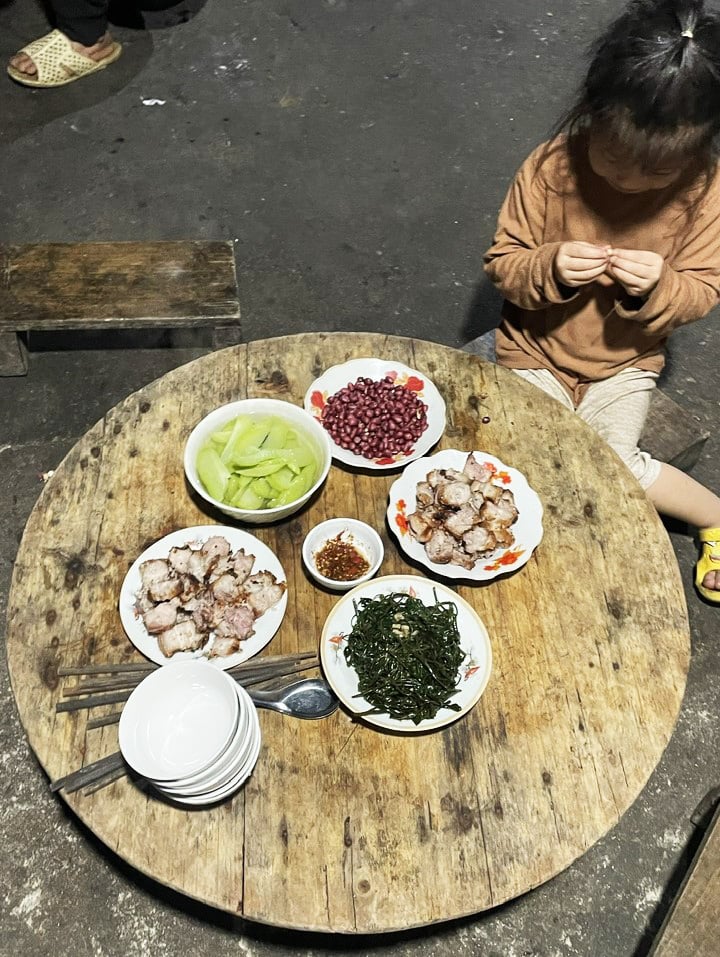
Daily meals of the Dao people that Ca Dao learns about
Ca Dao's most memorable memory so far with the culinary book project is the trip to the Red Dao village in Hoang Su Phi. "I received a lot of help from the locals, they taught me how to make buffalo jerky, make fresh sausage, and taught me how to use spices and flavorings. Making just a little bit took all night, I saw that they were very patient, marinating the meat somewhere and then finding sugarcane residue to burn and smoke, the main purpose is to make the meat fragrant and sweet for a longer time. If I didn't make a book, I don't think I would have had the opportunity to approach such interesting experiences," she excitedly recounted.
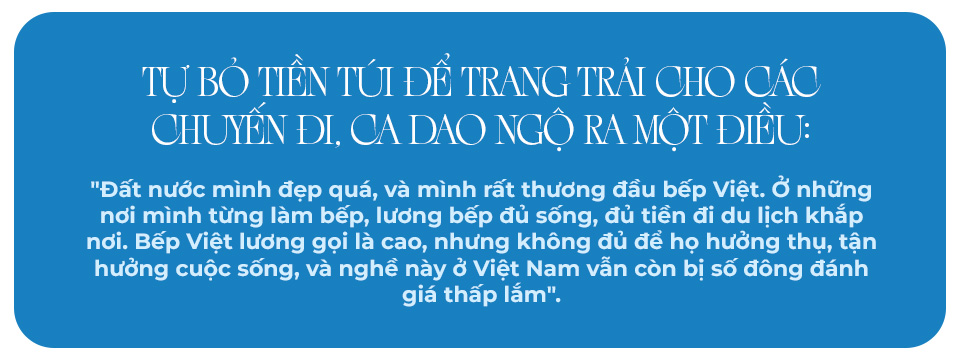
Source: https://thanhnien.vn/anas-ca-dao-van-manen-va-hanh-trinh-kham-pha-400-mon-viet-185240602081047193.htm


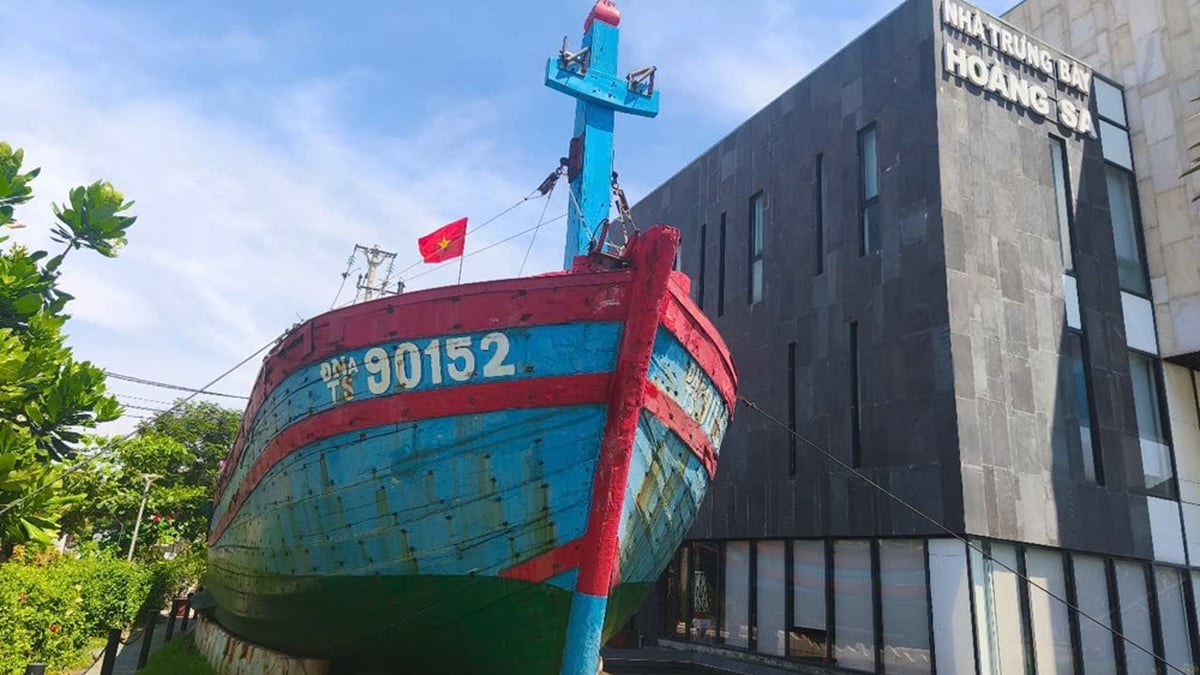

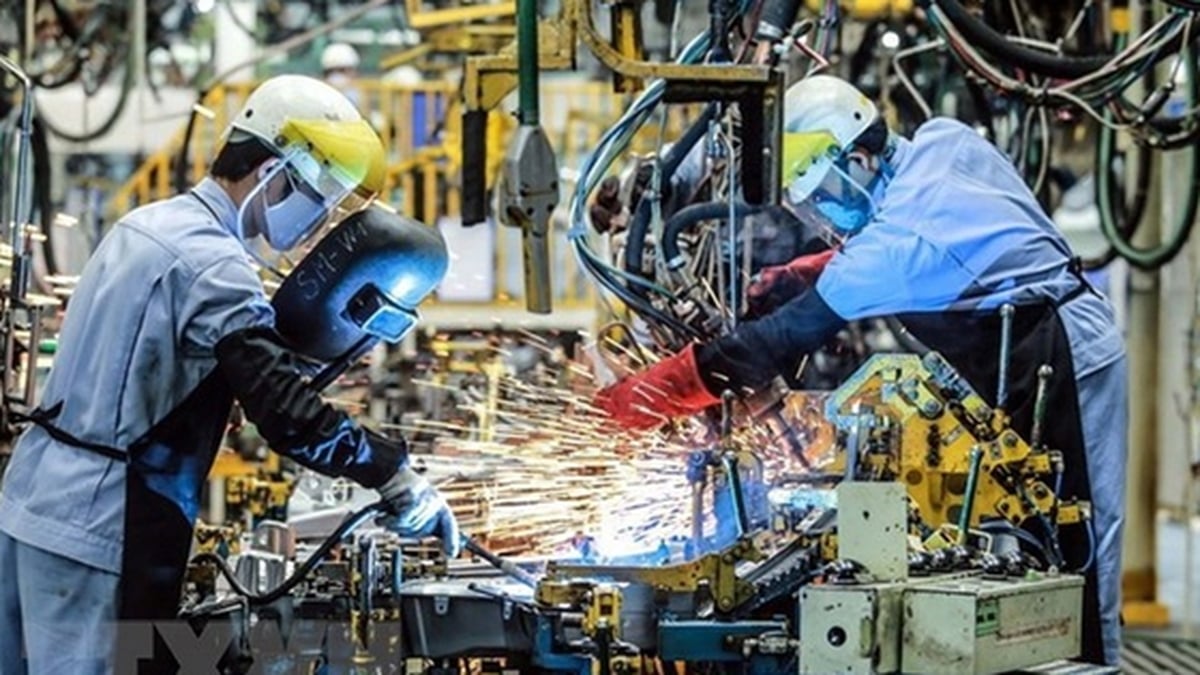
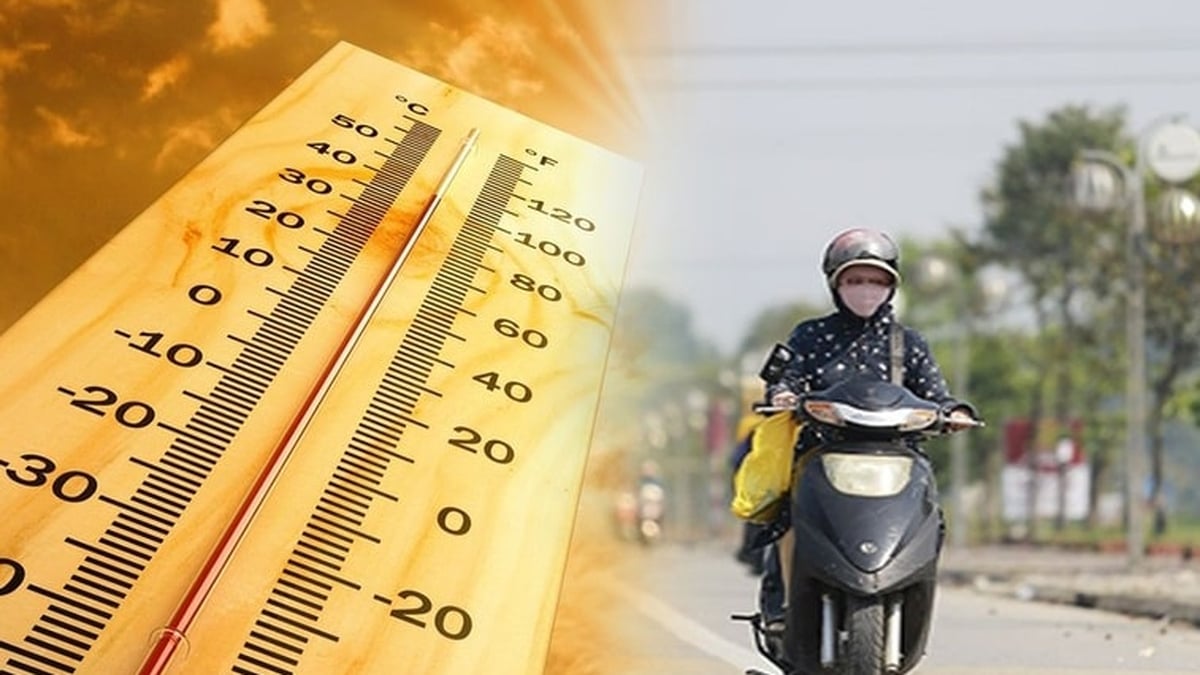

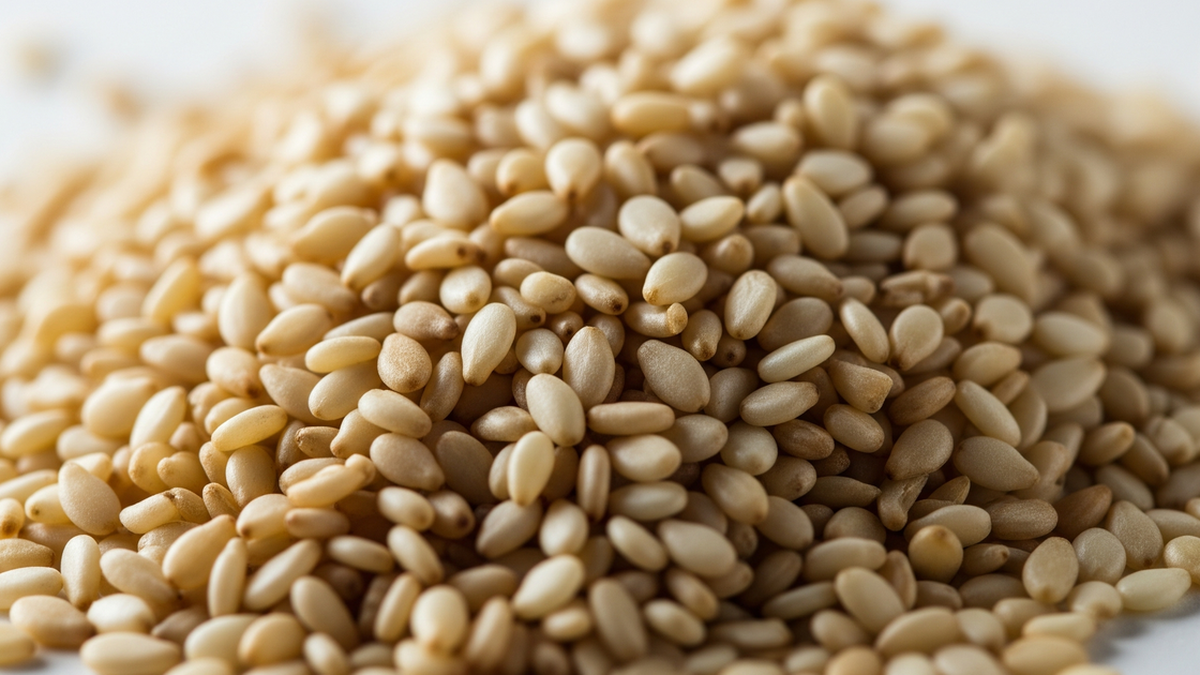
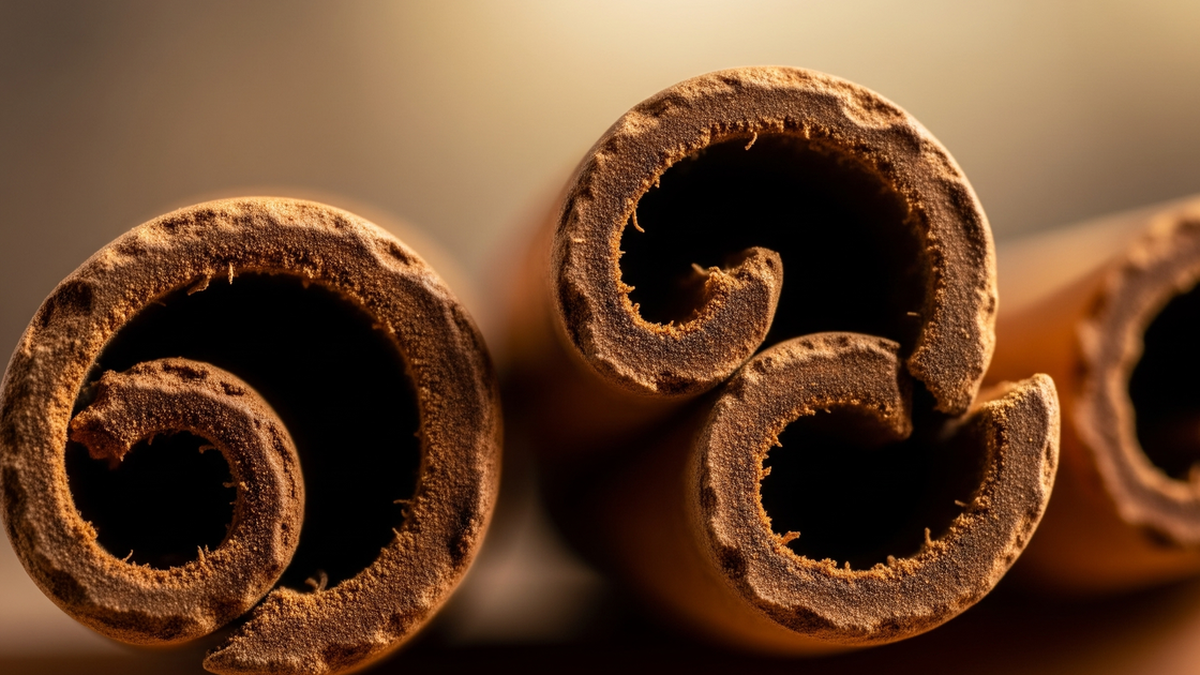











































![[Maritime News] More than 80% of global container shipping capacity is in the hands of MSC and major shipping alliances](https://vphoto.vietnam.vn/thumb/402x226/vietnam/resource/IMAGE/2025/7/16/6b4d586c984b4cbf8c5680352b9eaeb0)













































Comment (0)